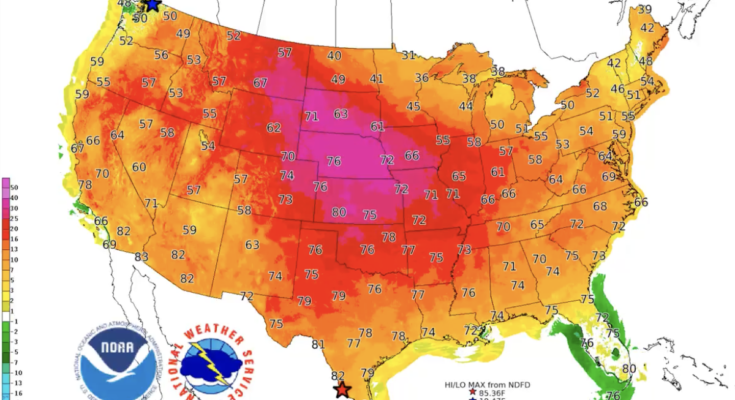
Winter is officially here, and it’s hot as hell. This week, large parts of the U.S. and Canada found themselves subject to yet another brutal heatwave, this time bringing record December temperatures that could easily be confused for a cool summer evening.
Montana, North Dakota, Washington, and Wyoming all set December temperature records as a heat dome of high pressure set in, trapping abnormal warmth in regions more accustomed to snow than t-shirt weather at this time of year. According to the National Weather Service, as much as a third of the continental U.S. experienced highs of over 70 degrees Fahrenheit (21 degrees Celsius) this week. December really is the new September y’all.
Across the central U.S., the National Weather Service said some states experienced temperatures a whopping 30 to 40 degrees Fahrenheit (17 to 22 degrees Celsius) higher than normal. In Montana, record high temperatures mixed with high winds are contributing to a series of unusual December prairie fires. One of those fires tragically burned down at least two dozen homes and businesses in the town of Denton. That includes the town’s grain elevator, which caught fire in spectacularly heartbreaking fashion.

“It’s definitely not a good sign that it is this dry in December and this warm,” a volunteer firefighter told the New York Times. “We’ve had zero moisture since May and no sign of any in the future.”
Across the border in Canada, British Columbia also broke December heat records, with temperatures reaching 72.5 degrees Fahrenheit (22.5 degrees Celsius) in the town of Penticon. That’s 5.4 degrees Fahrenheit (3 degrees Celsius) higher than the previous provincial record for December heat and ties the record for all of Canada.
Though temperatures are expected to dip down and offer some relief over the weekend, longer range forecasts predict potentially even more warmth during the second week of December, the Washington Post notes.
Heat isn’t the only problem either. British Columbia is still reeling from the series of atmospheric rivers that doused the region with rain and led to catastrophic flooding. The heavy rain from those storms took out snowpack and the heat will only further eat into it. Meanwhile, the lack of snow and rain in interior parts of the Mountain West has led to exceptional drought conditions. That lack of snowfall is part of the reason why states like Montana and Colorado are still seeing fires.
All of this comes just months after the U.S. experienced its hottest summer on record since the 1936 Dust Bowl. Some of the worst of the heat centered on the Pacific Northwest where triple-digit temperatures literally melted power cables and warped roads. The summer heat fell all-time Canadian records as well, making it an international crisis. (Ditto for the Pacific Northwest on the U.S. side of the border, too.) Heat in all seasons is the climate crisis’ calling card; burning fossil fuels have essentially tossed a blanket around the planet and that’s increasing the odds for more freakish heat waves like the one this week. That could make December the new July soon enough.



